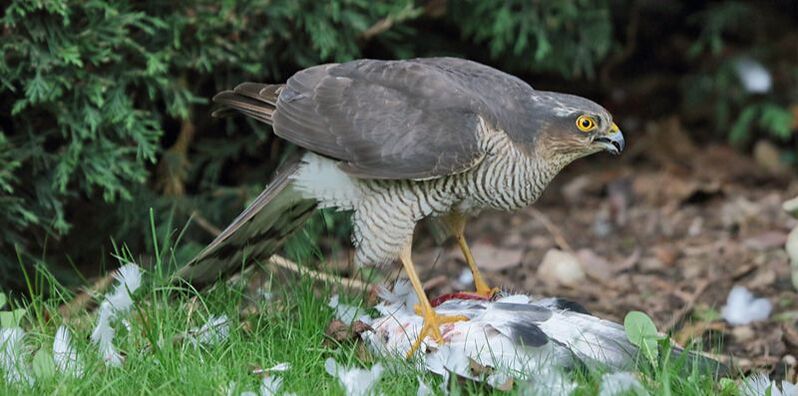|
Sixty years ago Rachel Carson’s book Silent Spring woke the world to organochlorine pesticides in the food chain. Sparrowhawks rang the alarm bell, when they disappeared from large areas of Britain in the 1960s. Pesticides accumulated in the hawks’ liver, leading to their laying eggs with thin shells, which broke easily. Their prey was small birds, which fed on cereal seeds dressed with pesticides from the 1940s. Subsequent generations of more toxic chemicals such as aldrin and dieldrin killed adult raptors.
Concerns have been growing about second generation anticoagulant rodenticides (SGARs) for 20 years, especially on birds such as Barn Owl that feed on small mammals and on scavengers of dead mammals, such as Red Kite. A new study tested Sparrowhawks that died in Britain over 20 years and found at least one SGAR in 81% of birds. One compound, difenacoum, occurred in 72% of sampled birds. But how do bird-eating hawks get dosed with rat poison when they rarely eat rodents? Research in Germany found that a third of songbirds around farms are contaminated with SGARs, especially Great Tits, the ideal size meal for a Sparrowhawk. Songbirds have not been tested for SGARs in Britain, but the same may be happening. Although few Sparrowhawks contained levels high enough to kill them, sub-lethal effects have been implicated in the Kestrel’s decline. Aerial hunters have to be fully fit to survive, and SGARs may impair hunting performance. The news will concern the Campaign for Responsible Rodenticide Use which said “There can be little doubt that rodenticide leakage into non-target wildlife arises largely from rural use, whether by gamekeepers, farmers or pest-controllers”. In the last year, SGARs have been found in Sparrowhawk, Goshawk and Buzzard in North Wales analysed by Welsh Government’s Wildlife Incident Investigations Scheme. Seven times the quantity required to kill an eagle were involved in the high-profile death of a White-tailed Eagle in Dorset earlier this year, raising fears that SGARs are also used to target rare raptors. Either way, the evidence increases the demand for greater regulation of rodenticide use. The study, by the UK Centre for Ecology and Hydrology, British Trust for Ornithology and Biomathematics and Statistics Scotland, is published in the journal Environmental Pollution.
0 Comments
Leave a Reply. |
Bird notesA weekly update of bird sightings and news from North Wales, published in The Daily Post every Thursday. Archives
July 2024
Categories |

 RSS Feed
RSS Feed
